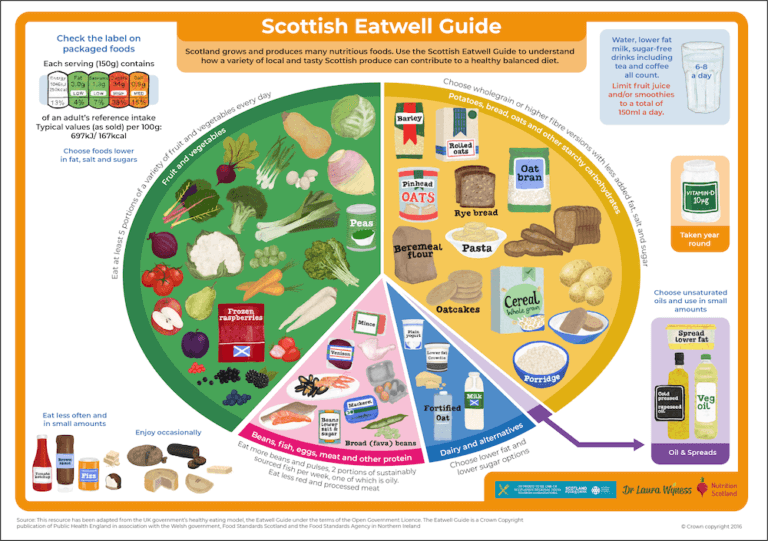The rapeseed plant comes from the same family as broccoli, cabbage and cauliflower. It originates from the Mediterranean and Northern Europe. Rapeseed crops have been grown in areas across the world for around 4,000 years. It only started to be grown on a commercial scale in Europe in the thirteenth century when it was originally used mainly for lamp oil and soaps.
Scottish rapeseed
In 1983, the first crop of oilseed rape was grown on a farm in north-east Aberdeenshire. This showed that oilseed rape could be successfully grown and produce good yields in Scotland. In fact, the long day length and cool temperatures means that the crop is very well suited to the Scottish environment.
Growing rapeseed
Cold pressed rapeseed oil producers in Scotland generally grow a winter rapeseed crop, which means the seed is planted in September and harvested the following July. Some farmers grow a spring crop, which means they plant the rapeseed in April and harvest in September.
As the rapeseed plant grows and blooms, bright yellow fields of rapeseed flowers can be seen across the Scottish countryside in late spring and early summer. When the yellow flowers die back, tiny black seeds, around 2mm in diameter, form inside very delicate seed pods.
Processing the seeds
Regular rapeseed oil is generally crushed using heat and a chemical solvent to remove the oil. It’s a very efficient process to get a high amount of oil from the seeds. Despite some negative messages on social media about the process of refining seed oils, any solvent used in processing evaporates so that none is found in the final extracted oil (find out more here). In the UK, when you buy a bottle of vegetable oil, it’s likely to be 100% rapeseed oil (check the ingredients list to see).
With cold-pressed rapeseed oil, the seeds are gently pressed at less than 40˚C. This gentle process is thought to help retain the beneficial plant compounds and pleasant flavour compounds in the oil. You may notice slight variations between different cold-pressed rapeseed oils, for example, depending on the soil the crops were grown in, or the amount of sunshine the crop had. Once pressed, the oil is filtered to ensure particles are removed before being bottled and labelled. To learn more about farming rapeseed and producing oil, check out this Food Connections podcast episode with a Scottish rapeseed oil producer.
Nutrition
Rapeseed oil is lower in saturated fat than all other vegetable oils. It’s high in mono-unsaturated fat and is higher in a type of omega-3 fat called alpha-linolenic acid (or ALA) compared with other vegetable oils.
Rapeseed oil is high in vitamin E, which is an antioxidant that helps protect cells from damage and provides vitamin K, which is essential for bone health and blood clotting.
There’s a range of bioactive plant compounds found in rapeseed oil, particularly in cold-pressed rapeseed oil as the gentler process of extracting the oil retains more of the plant compounds such as phenolic acids, plant sterols, flavones and flavanols that have various health benefits (Shen et al., 2023).
Health
Including some fat in our diet is essential, but many of us are consuming too much saturated fat. Healthy dietary advice is to eat less saturated fat, or swap foods high in saturated fat for those high in unsaturated fat, to reduce the health risks linked with high blood cholesterol levels.
Mono-unsaturated and poly-unsaturated fats help maintain healthy cholesterol levels. Omega-3 fatty acids help protect against heart disease and have an important anti-inflammatory role. Evidence indicates the benefits of rapeseed oil for heart health and metabolic health (Lin Lin, 2013; Jones, 2014).
The oil is a source of vitamin E which protects cells from damage and helps maintain healthy skin and eyes. Cold-pressed rapeseed contains a variety of antioxidants with numerous health benefits.
Various ways to use rapeseed oil
Rapeseed oil has a high smoke point. This is the temperature at which an oil starts to smoke. When oils are heated to, or past the smoke point, the nutrients can be damaged and the taste can change.
Rapeseed oil (including cold-pressed rapeseed oil) is a great option for frying, roasting, baking and salad dressings. Rapeseed oil works well in many baking recipes. Swapping some or all of the butter for rapeseed oil in cake and cookie recipes will improve the fat profile.
The taste is often described as “a subtle nutty and buttery flavour with earthy notes”. Its versatility, flavour and colour makes it a popular choice of many chefs.
Final note
Remember that all types of fat and oils are high in energy and should be eaten in small amounts. It’s also best to store oils in a cupboard as they are sensitive to light, heat and oxygen.





